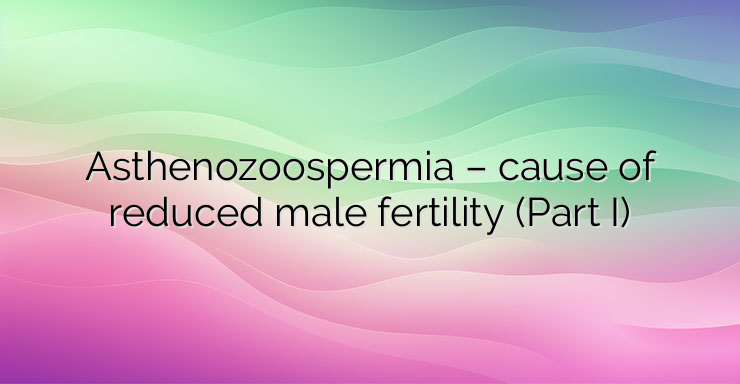In recent decades, there has been an increase in cases of male sterility, which is associated with neuropsychological stress in men, reduced immunity, sexually transmitted diseases and … polluted environment. All these factors can lead to impaired sperm motility, disorders in spermogenesis and reduced fertility. What is asthenozoospermia Asthenozoospermia is a decrease in the amount of motile spermatozoa and the speed of their movement in a man’s ejaculate, which affects his fertility. The amount of weakly mobile or immobile forms in this case exceeds 30%. According to the recommendations of the World Health Organization, the degrees of sperm motility are considered in four groups: group A – highly mobile spermatozoa (actively progressive) group B – are projected forward more slowly (weakly progressive) group C – mobile, but in one place group D – immobile. According to the standards of the World Health Organization, for the ejaculate to have good fertilizing properties, it must contain more than 20% spermatozoa of group A and more than 50% spermatozoa of groups A and B. The reasons are not yet sufficiently understood. It is believed that the condition is due to the impact of various toxic substances – use of alcohol, nicotine, drugs; environmental impact – polluted environment from industrial waste, radiation, high temperatures; as well as due to various infections, especially mycoplasma, inflammatory processes and various autoimmune diseases. All these factors can lead to changes in the chemical composition of the plasma (liquid) in the sperm, when the amount of hydrocarbons and other energy substances decreases in its content. The reduction or lack of negative electric charge of spermatozoa, presence of various pathological microorganisms, such as mycoplasma, on their surface is important. Various disorders in spermatogenesis (sperm formation) are observed, as a result of which the amount of motile spermatozoa is reduced and pathological forms are formed, incapable of full movement. Asthenozoospermia is not age-related – fertility in men does not decline with age as it does in women. Most often, the condition is due to congenital features of the body or after passing through an illness. The amount of immotile spermatozoa increases with prolonged sexual abstinence. In continuation: signs and diagnosis


Leave a Reply